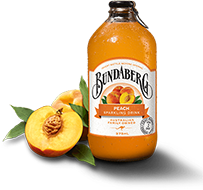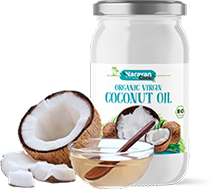Phyllanthus emblica – The Power Fruit of Ayurveda
Scientific Name: Phyllanthus emblica
Common Names: Amla, Indian Gooseberry, Nellikai, Amalika
Family: Phyllanthaceae
Overview
Phyllanthus emblica, commonly known as Amla or Indian Gooseberry, is a small deciduous tree native to the Indian subcontinent. This superfruit is renowned for its medicinal properties and revered in Ayurvedic medicine as a powerful rejuvenator. It is rich in antioxidants, vitamin C, and numerous bioactive compounds.
Botanical Description
- Tree Type: Small to medium-sized deciduous tree (8–18 meters tall)
- Leaves: Simple, narrow, and light green, resembling pinnate leaves
- Flowers: Small, greenish-yellow, unisexual, appearing in leaf axils
- Fruit: Round, smooth, hard, pale green with 6 vertical stripes
- Taste: Sour and astringent, followed by a sweet aftertaste
Nutritional Profile
Amla is among the richest natural sources of vitamin C and also contains:
- Polyphenols (gallic acid, ellagic acid)
- Flavonoids and tannins
- Iron, calcium, phosphorus
- Fiber and amino acids
Medicinal Properties
Amla is classified as a rasayana in Ayurveda—an agent promoting longevity and immunity. It is backed by both traditional wisdom and modern science.
Key Health Benefits:
- Immunity Booster: Enhances resistance to infections with its high vitamin C content
- Anti-aging: Antioxidants reduce cellular damage, supporting youthful skin and hair
- Digestive Health: Aids digestion, relieves constipation, and improves gut health
- Diabetes Support: Regulates blood sugar and improves insulin sensitivity
- Heart Health: Reduces cholesterol and supports strong cardiac function
- Liver Detox: Promotes liver function and natural detoxification
- Respiratory Aid: Helps relieve asthma, coughs, and respiratory infections
🔔 Traditional Note: Amla is a core ingredient in Triphala, an Ayurvedic formulation for digestion and detox.
Culinary & Cosmetic Uses
- Culinary: Found in pickles, chutneys, candies, juices, and powders
- Hair Care: Used in herbal oils, shampoos, and tonics to promote hair health
- Skincare: Helps in skin brightening and anti-aging formulations
Cultivation & Growing Conditions
Amla is low-maintenance and highly suitable for organic cultivation in tropical and subtropical regions.
Growing Requirements:
- Climate: Thrives in warm, semi-arid climates with full sun
- Soil: Loamy or light clay soil with good drainage and pH between 6.5–8.5
- Watering: Minimal irrigation needed once established
- Propagation: Grown via seeds or grafting for consistency
- Harvest Season: November to February
Role in Organic & Sustainable Farming
- Low Input: Grows with little need for fertilizers or pesticides
- Resilient: Drought-tolerant and suitable for marginal lands
- Agroforestry Friendly: Can be intercropped with legumes and herbs
- Soil Support: Helps in soil conservation and water retention
Economic & Cultural Importance
- Ayurvedic Value: Used in herbal formulations for over 3,000 years
- Market Demand: Popular in the health, wellness, and cosmetics industry
- Value-Added Products: Available as powder, capsules, juice, candy, and oil
Conclusion
Phyllanthus emblica is a powerful, nutrient-rich fruit with deep roots in traditional healing. Easy to grow, high in demand, and loaded with benefits—it is a cornerstone of holistic health and a valuable asset for organic farming.
 Fishing Reels Spin
1 × $100.00
Fishing Reels Spin
1 × $100.00
 Spoon lure tackle Baits
1 × $19.00
Spoon lure tackle Baits
1 × $19.00
 Fishing Reels Globeride
1 × $10.00
Fishing Reels Globeride
1 × $10.00
